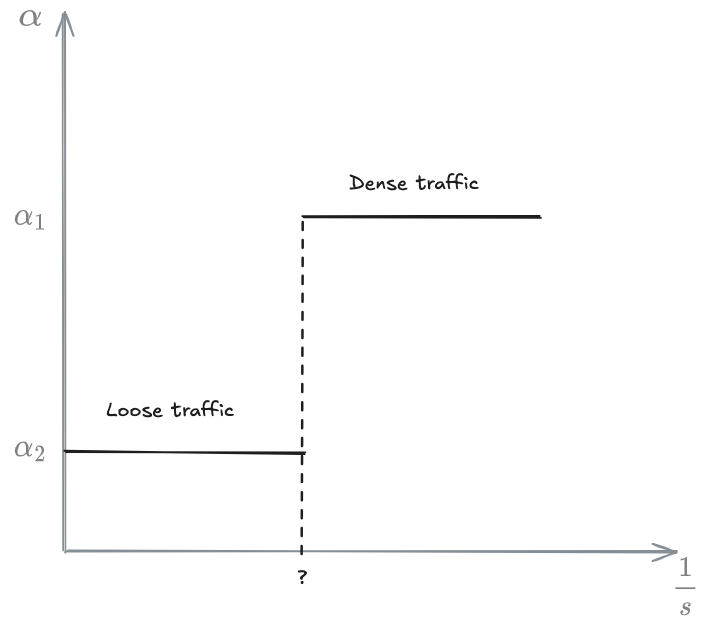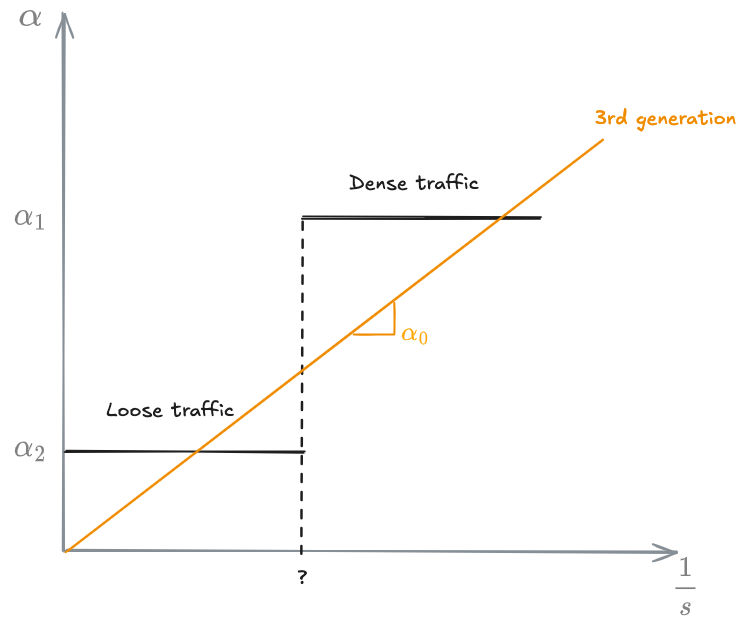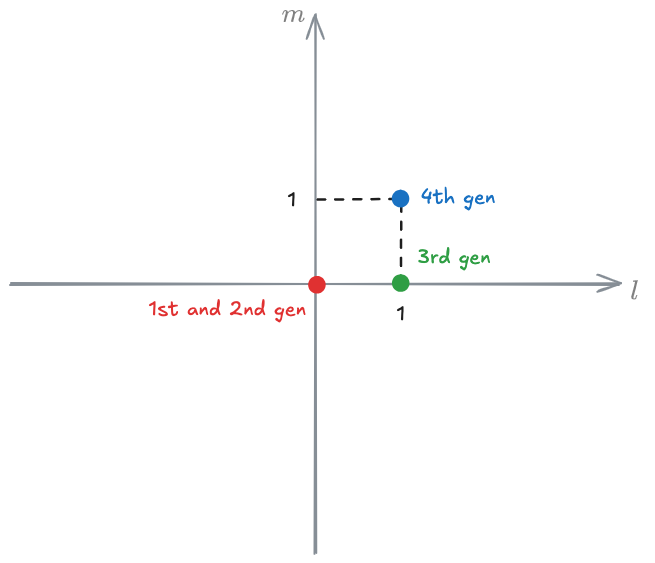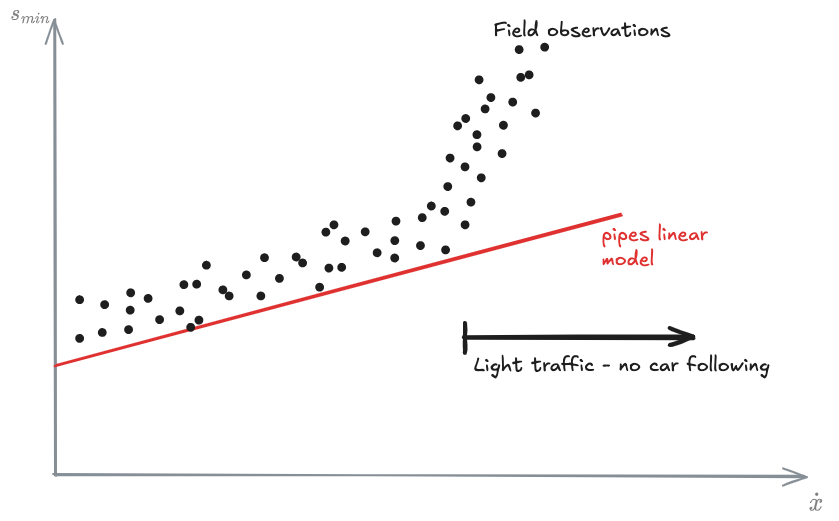03 - Car Following models - TSM
03 - Car Following models - TSM
Car following model
A car following model describes how a pair of vehicles interacts one with each other.
In each CFM we always have a leader and a follower.
See also: [[04 - Microscopic traffic flow modeling - OMT#Car following models]]
This is not usually stated explicitly (eccepts in Gipps' paper) but, when a leader is not available (very low traffic density), we simply assume the vehicles try to follow free-flow behaviour.
There are some aspects to take into account. We we start to allow lane changing, then we need to consider that the leader/follower pairs also change.
We will look into several CFM:
General Motors
(In this class, we only looked at generations 1, 3 and 5.
Differently from 🚦 OMT, we use this notation:
sensitivity Reaction time
3 car following model
This is an extension of the [[#General Motors]] models, proposed by Fox-Lemann in 1967. They account for 3 cars at the same time, where the follower is affected both by the leader and the leader's leader stimuli:
Collision avoidance models
The main principle behind collision avoidance models is that a driver will place themselves at a certain distance from the leading vehicle, such that in the event of an emergency stop by the leader, the follower will come to rest without striking the leading vehicle
Models that fall under this category are:
- Pipes (1953)
- Gipps (1981)
- Mehut (1999-2001) - improvement over Gipps' model
Pipes model (1953)
Gipps model (1981)
The principle is to keep a safe distance from the leading vehicle to avoid crashing.
It's a time discrete model, meaning it needs time steps.
According to Gipps, the model should have the following properties:
- Model should mimic behaviour of real traffic
- Parameters should have physical meaning on driver and vehicle (easy calibration)
- Time step = reaction time
This model basically works as an optimization problem where the user wants to maximize their speed according to 2 constrains:
- Acceleration constraint: each vehicle has a maximum acceleration it can be subject to
- Safety constraint: the trajectory of each vehicle is affected by that of the vehicle in front
Gipps uses the following notation:
reaction time derived speed of vehicle maximum acceleration with the driver of vehicle wishes to undertake most severe braking for vehicle effective length of vehicle estimated most severe braking for vehicle (empirically)
ACCELERATION:
SAFETY:
After estimating both quantities, Gipps selects the minimum value of speed between the two, and assigns that to the vehicle.



